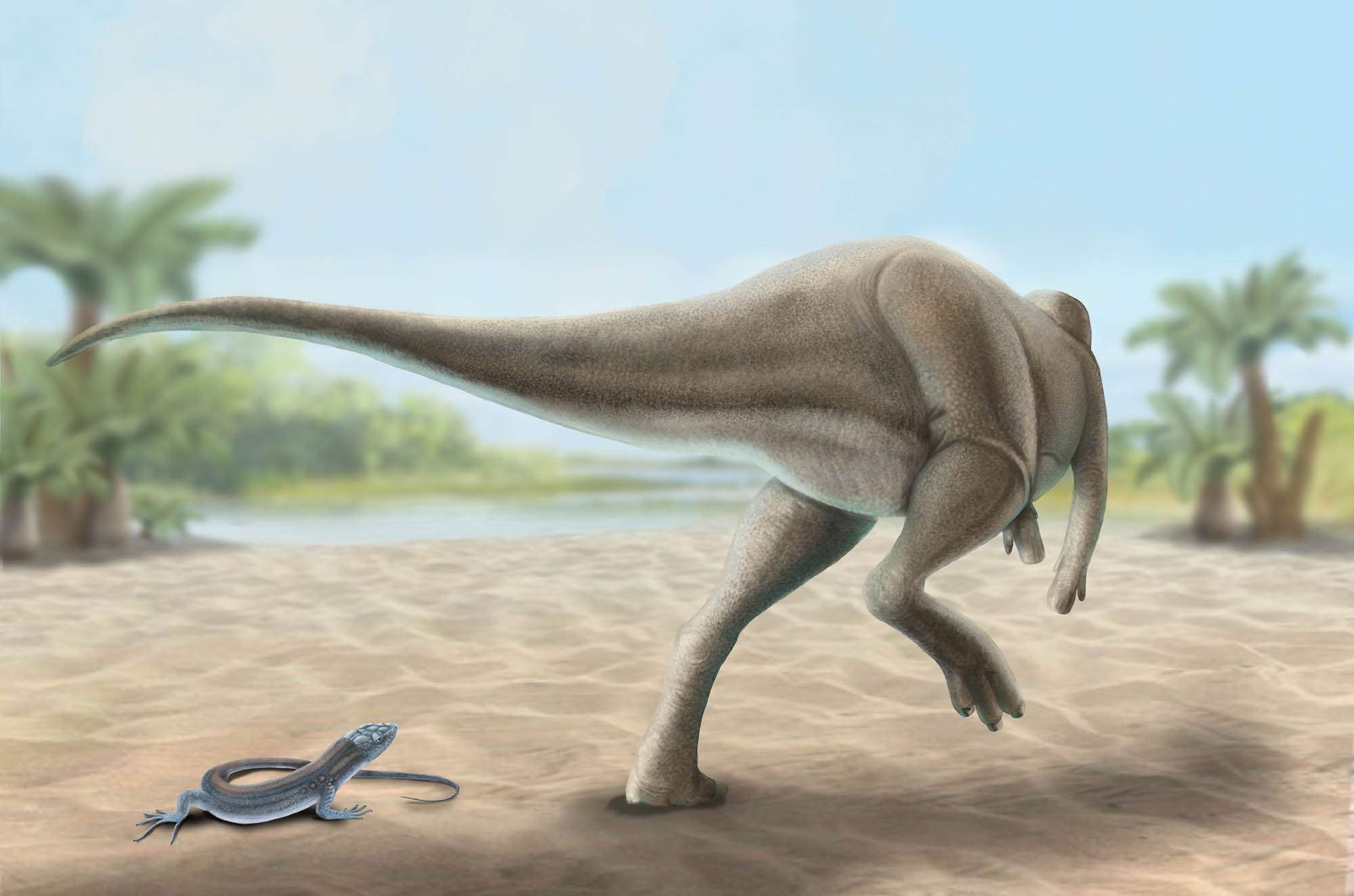Scientists have discovered a new dinosaur said the be one of the last ones standing before a massive meteor wiped out all of its relatives on Earth.
The Calvarius rapidus was unearthed by dino experts beside a river in the Province of Lleida, in one of the four provinces of Catalonia, north-eastern Spain
The 40-foot-long dinosaur appeared at the end of the Mesozoic era just before a giant asteroid hit what is now Mexico 66 million years ago.
The impact triggered a series of events that led to the extinction of all non-avian dinosaurs.
But the Calvarius rapidus, the experts said, were among the last species to die out.
Newsflash obtained a statement from the Catalan Insitute of Palaeontology saying: “This geological era ended with the well-known impact of a meteorite on Earth, which caused the extinction of all non-avian dinosaurs, along with many other groups of organisms.
“Therefore, Calvarius rapidus is one of the last dinosaurs to have walked the planet.”
They added: “It is one of the last dinosaurs that existed before their extinction worldwide.”
The new species emerged after scientists unearthed a foot bone near the Pyrenees mountains.

Paleontologists Albert Prieto-Marquez and Albert Selles, from the Miquel Crusafont Catalan Institute of Palaeontology (ICP) and the Conca Della Museum are credited with the find.
Their research has been published in the academic Journal of Vertebrate Paleontology and has revealed that the dinosaur was a large herbivorous creature.
The statement also said: “Palaeontologists from the Institut Catala de Paleontologia Miquel Crusafont (ICP) and the Museu de la Conca Della (MCD), Albert Prieto-Marquez and Albert Selles, have described a new species of dinosaur called Calvarius rapidus based on a foot bone found in Pallars Jussa (Lleida, Catalonia).”
The statement went on: “The new species is an ornithopod, one of the most diverse, long-lived, and cosmopolitan groups of herbivorous dinosaurs, which includes iconic representatives such as iguanodonts or ‘duck-billed’ hadrosaurs.
“Within the ornithopods, C. rapidus belongs to the group of styracosternans and inhabited the current Catalan Pyrenees during the late Cretaceous period, approximately 66 million years ago, specifically in the last hundred thousand years of the Mesozoic.”
They explained its name, saying: “It is precisely the temporal proximity between this mass extinction event and the age of the fossil that has given the name to the new genus Calvarius, referring to the ‘calvary’ that the meteorite impact represented for the biosphere.
“The specific epithet rapidus refers to the characteristics of a running animal displayed by the specimen.”
The dinosaur remains were originally excavated in 2019, with the research being just published.
Prieto-Marquez said: “In the excavations carried out in the area, a crocodile vertebra and several unidentified bone fragments were found, along with the remains of the holotype of Calvarius rapidus.”
He added: “It is a very unusual metatarsal for this group of dinosaurs.
“Although we only have this specimen, the combination of typical characteristics of styracosternan ornithopods with a slender and elongated morphology clearly indicates that we are dealing with a new species for science within this group.”
And Selles said: “The fact that Calvarius presents such a thin and long metatarsal is reminiscent of the metatarsals of small herbivorous dinosaurs that branched off into their own evolutionary lines before the last common ancestor of the styracosternans.”
He added: “While some species in this group of dinosaurs reached lengths of over 10 or 12 metres [32.8 or 39.4 feet], C. rapidus would be the smallest styracosternan dinosaur on the planet.”
To find out more about the author, editor or agency that supplied this story – please click below.
Story By: Joseph Golder, Sub-Editor: Marija Stojkoska, Agency: Newsflash
The Ananova page is created by and dedicated to professional, independent freelance journalists. It is a place for us to showcase our work. When our news is sold to our media partners, we will include the link here.




